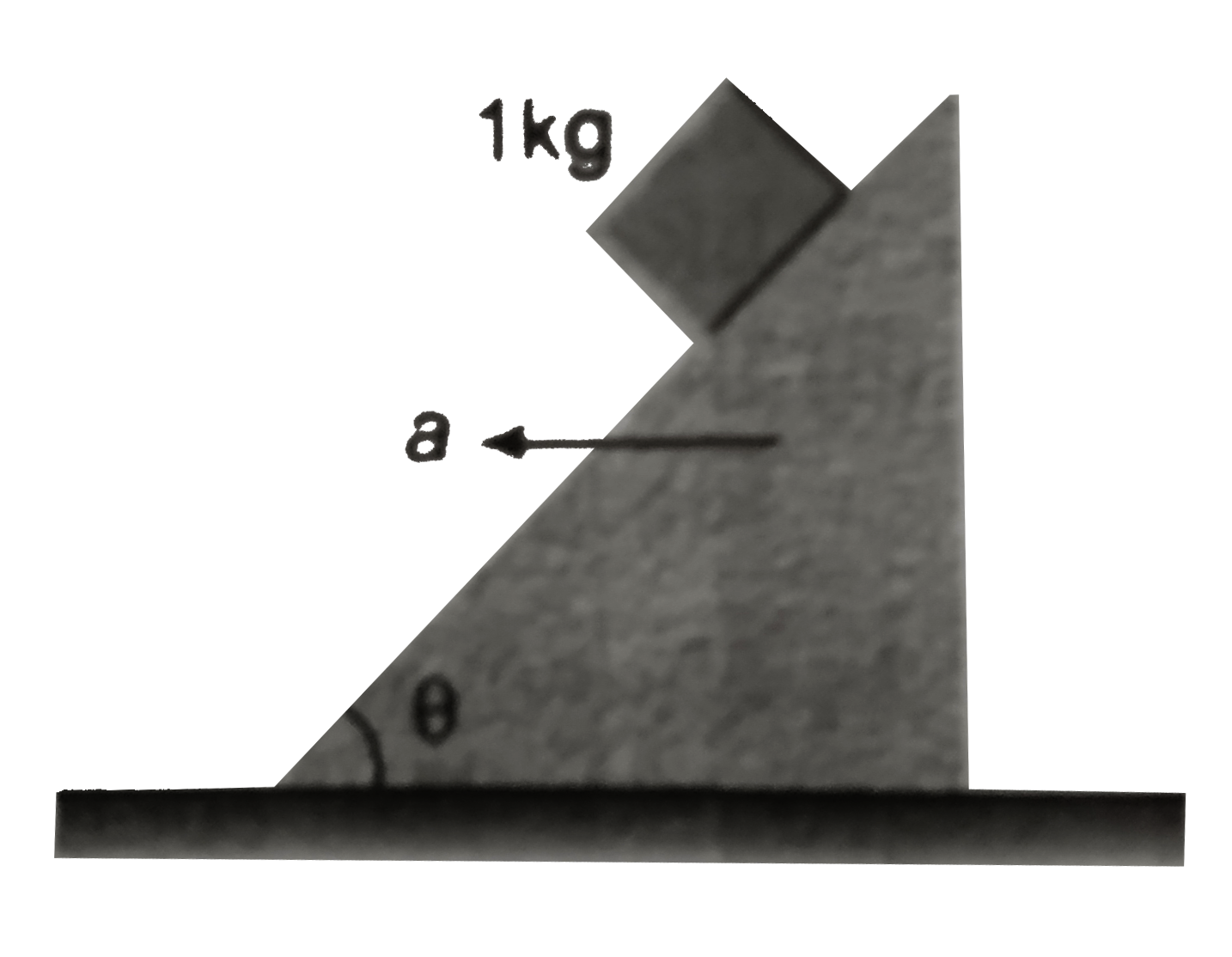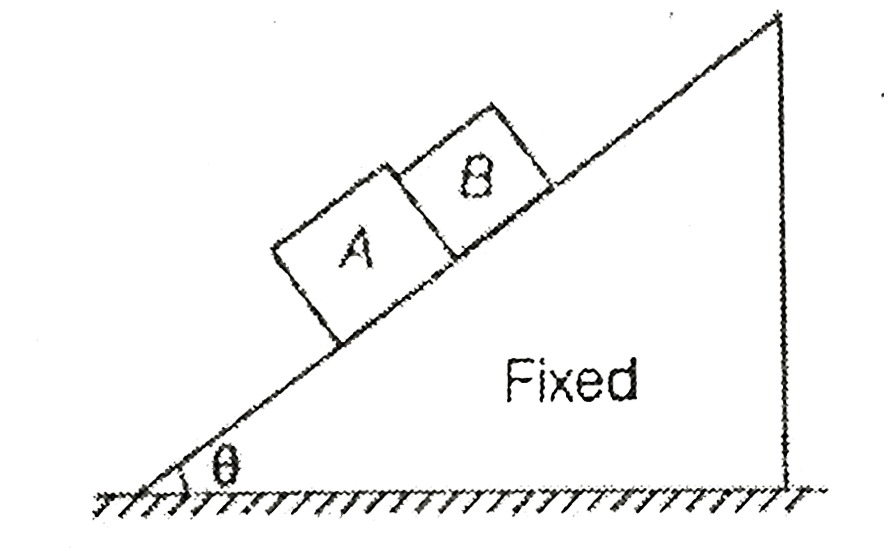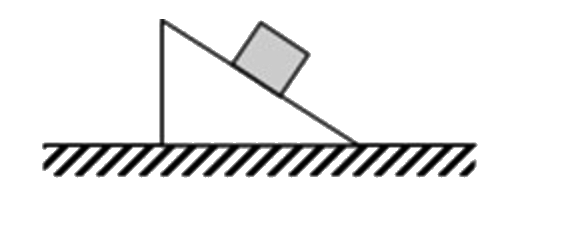
In the figure shown all the surface are smooth. All the blocks A,B and C are movable x-axis is horizontal and y-axis vertical as shown. Just after the system is relased from the position as shown.
Acceleration of 'A' relative to ground is in negative y− direction
Acceleration of 'A' relative to B is in positive x− direction
The horizontal acceleration of 'B' relative to ground is in negative x− direction.
The acceleration of 'B' relative to ground directed along the inclined surface of 'C' is greater than gsinθ.
The correct Answer is:A, B, C, D
There is no horizontal force on block A, therefore it does not move in x− directing , whereas there is net downward force (mg−N) is acting on it, making its acceleration along negative y− direction. Block B moves downward as well as in negative x− direction. Downward acceleration of A and B will be equal due to constrain, thus w.r.t.B,A moves in positive x− direction.

Due to the component of normal exerted by C on B, it moves inn negative x− direction.
Topper's Solved these Questions
- DAILY PRACTICE PROBLEMSBOOK - RESONANCE ENGLISHCHAPTER - DAILY PRACTICE PROBLEMSEXERCISE - dpp29
5 Videos
- DAILY PRACTICE PROBLEMSBOOK - RESONANCE ENGLISHCHAPTER - DAILY PRACTICE PROBLEMSEXERCISE - dpp 30
4 Videos
- DAILY PRACTICE PROBLEMSBOOK - RESONANCE ENGLISHCHAPTER - DAILY PRACTICE PROBLEMSEXERCISE - dpp 27
3 Videos
- CURRENT ELECTRICITYBOOK - RESONANCE ENGLISHCHAPTER - CURRENT ELECTRICITYEXERCISE - Exercise
53 Videos
- ELASTICITY AND VISCOCITYBOOK - RESONANCE ENGLISHCHAPTER - ELASTICITY AND VISCOCITYEXERCISE - Advanced Level Problems
9 Videos
Similar Questions
In the figure shown A and B are free to move . All the surface are smooth. Mass of Aism. Then

View SolutionIn the arrangement shown in figure all surface are amoth .Select the correct alternative(s).

View SolutionIn the shown figure, if all the surface are smooth and the two masses are allowed to move then center of mass of the system will move

View SolutionIn the figure shown , A and B are free of to move. All the surfaces are smooth. (0<θ<90∘)

View SolutionIn the figure shown , A and B are free of to move. All the surfaces are smooth. (0<θ<90∘)

View SolutionAll the surfaces are smooth as shown in figure. The acceleration of mass m relative to wedge is :

View Solution
A particle is projected from the horizontal x-z plane, in vertical x-y plane where x-axis is horizontal and positive y-axis vertically upwards. The graph of y coordinate of the particle v/s time is as shown . The range of the particle is √3. Then the speed of the projected particle is:
View SolutionA regular hexagon of side a=10√3m is kept at horizontal surface as shown in the figure. A particle is projected with velocity Vm/s at an angle θ from point K such that it will just touches the all four corners regular hexagon at B, C, D and E as shown in the figure. If O is the centre of hexagon and x−axis is parallel to horizontal and y−axis is perpendicular to AF and CD side of hexagon then answer the following [take g=10m/s2]
The maximum height from horizontal surface attained by projectile is

View SolutionIn the figure shown all surface are smooth. Find
(a)acceleration of all the blocks,
(b) net force on 4kg and 10kg blocks and ,
( c) force acting between 4kg and 10kg blocks.

View SolutionA regular hexagon of side a=10√3m is kept at horizontal surface as shown in the figure. A particle is projected with velocity Vm/s at an angle θ from point K such that it will just touches the all four corners regular hexagon at B, C, D and E as shown in the figure. If O is the centre of hexagon and x−axis is parallel to horizontal and y−axis is perpendicular to AF and CD side of hexagon then answer the following [take g=10m/s2]
The time required to move the particle from D to E is

View Solution
